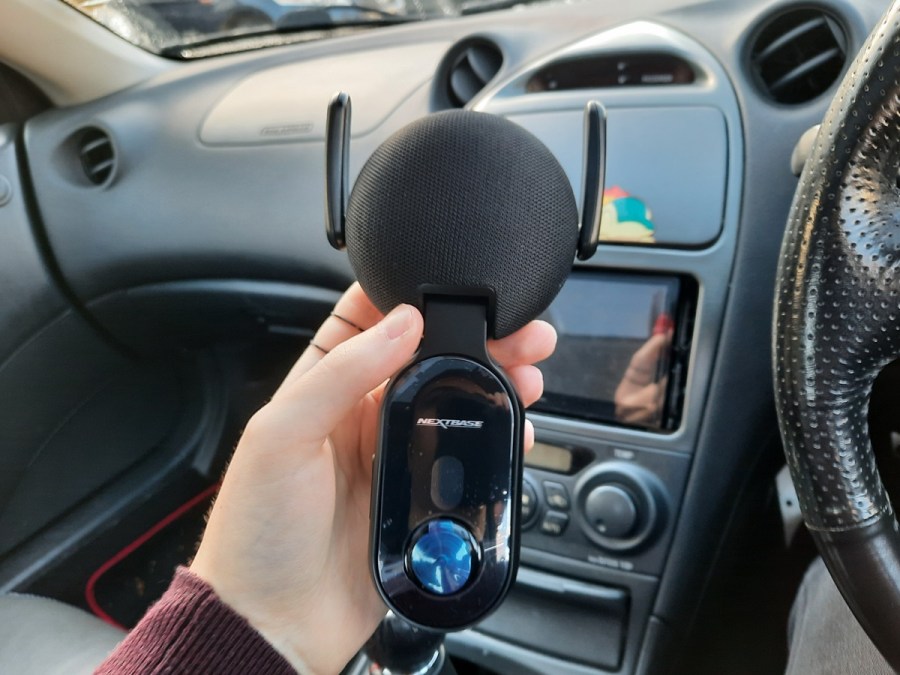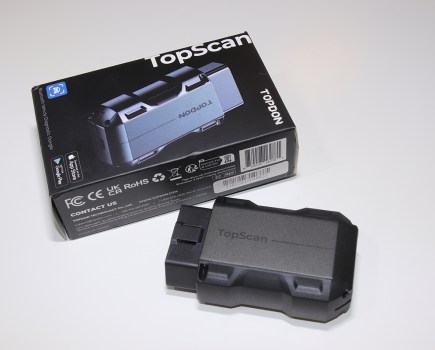RRP: from $499.99, buy now / £349.00, buy now.
Dash cams are becoming increasingly relevant in global society. According to Nextbase’s research, about 1 in 200 vehicles have dash cams equipped in the US, while that figure is as high as 1 in 7 in the UK. But that’s nothing compared to Japan, where astoundingly 1 in 1.5 vehicles across the country reportedly use dash cams! At first, those figures seem absurdly high, but when you consider that 92% of drivers say that they’ve witnessed road rage in the past year, it perhaps shouldn’t be a surprise that more and more people are intent on protecting themselves and their car while out on the road.
As such, it was only a matter of time before a big company within the dash cam market attempted to reinvent the wheel and revolutionize the industry. And as it happens, that company is Nextbase. The Nextbase iQ bills itself as ‘the future of dash cams’, and the folks who developed it hope it’ll cause a market shift as big as the one created by Ring door bells in the home security industry. Lofty ambitions then, so how does it stack up in practice? Let’s find out…
How we tested this product
Having kindly been supplied with a sample product by Nextbase, I’ve been able to test every aspect of iQ ownership. That includes installation, how it performs as a camera, and the effectiveness of its added features. So, although this isn’t a long-term test, it’s intended to be quite a holistic one. That way, you’ll be able to get a fair snapshot of what it’s like to really live with one of these dash cams before you part with your money.
Plus, as I’ve conducted many dash cam reviews for Fast Car before, I’m well-placed to assess how the Nextbase iQ’s performance stacks up against its closest rivals.
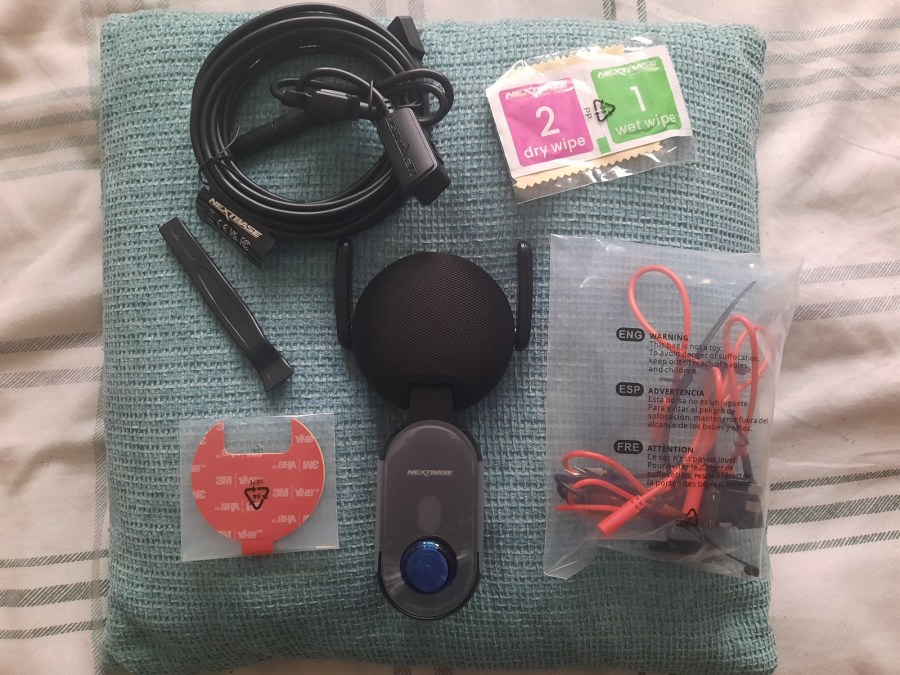
What’s in the box?
The first place I always start when reviewing a dash cam is, naturally, the box. The Nextbase iQ is packaged very neatly, securely, and simply, as you would expect from a premium product. Though, as I’ve come to learn, not every brand will offer you the same experience in that regard. This is definitely one of the nicer ones. More important than that though, it’s worth outlining exactly what is in the box when you order it.
With the iQ, you get the camera itself (with microSD memory card pre-installed) and two different ways of powering it. There’s an OBD2 power lead – which is what I’ll be using in this test – or a hardwiring kit which allows you to directly link the camera to the onboard fuse box. There’s also a plastic fitting tool to help you tuck away wires, a spare adhesive plate for the camera mount, and a set of cleaning cloths to prepare your windscreen. An installation guide can be found in video form via a QR code, or you can run through the tutorial that appears when you first download the Nextbase iQ app.
Tech Specs:
Resolution: between 1080p-2160p (front) and 1080p-1440p (cabin) depending on spec. 4K/2160p top spec tested in this review.
Field of View: 140 degrees (front), 180 degrees (cabin)
Extra Features: Live View, Smart Sense parking, Witness Mode, SOS Alerts, iQ app, and more big additions to come in the near future.
Installation
Installing the Nextbase iQ is, fortunately, very straightforward. Here’s how I did it…
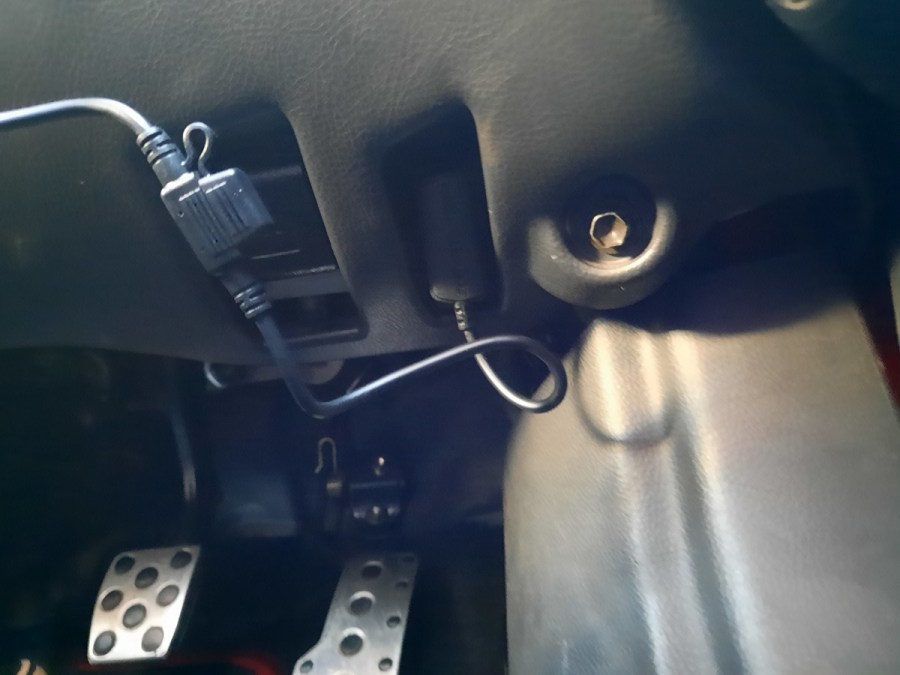
Connecting to power
The easiest way to get a constant power stream to the iQ is by using the OBD2 power lead. Simply connect the plug to your car’s socket (mine is in the driver’s side footwell) and then insert the other end of the cable into the socket on the camera mount. This constant delivery of power without needing to turn the engine on will ensure that you can use features such as parking mode, but thanks to clever sensing technology, the iQ will refrain from drawing energy if it detects that your car’s battery is running low on charge. So, you don’t have to worry about returning to your car after a few days, only to find that that battery is completely flat.
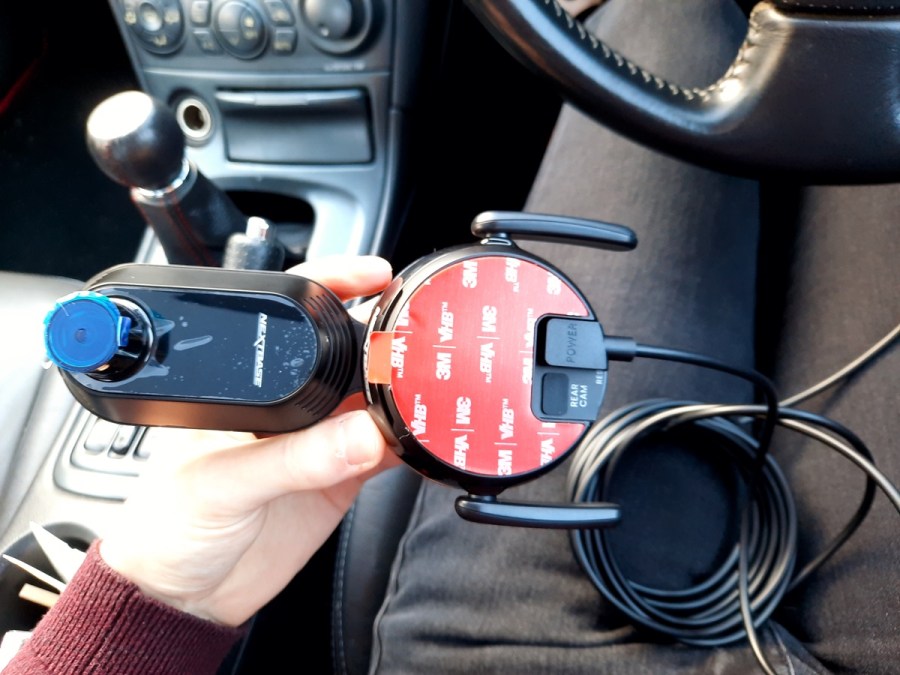
Mounting system
Once you’ve sorted the power source, the next thing to do is to think about where you’re going to position the camera on your windscreen. It’s quite a chunky device, so it’ll need to go somewhere which doesn’t obstruct your view of the road ahead. Nextbase recommends somewhere to the passenger side of the rearview mirror, so that’s exactly what I did. The mount itself isn’t as ergonomically-friendly as the Click&Go Pro magnetic system you get with the standard Nextbase range, but perhaps it needs a bit more sticking power.
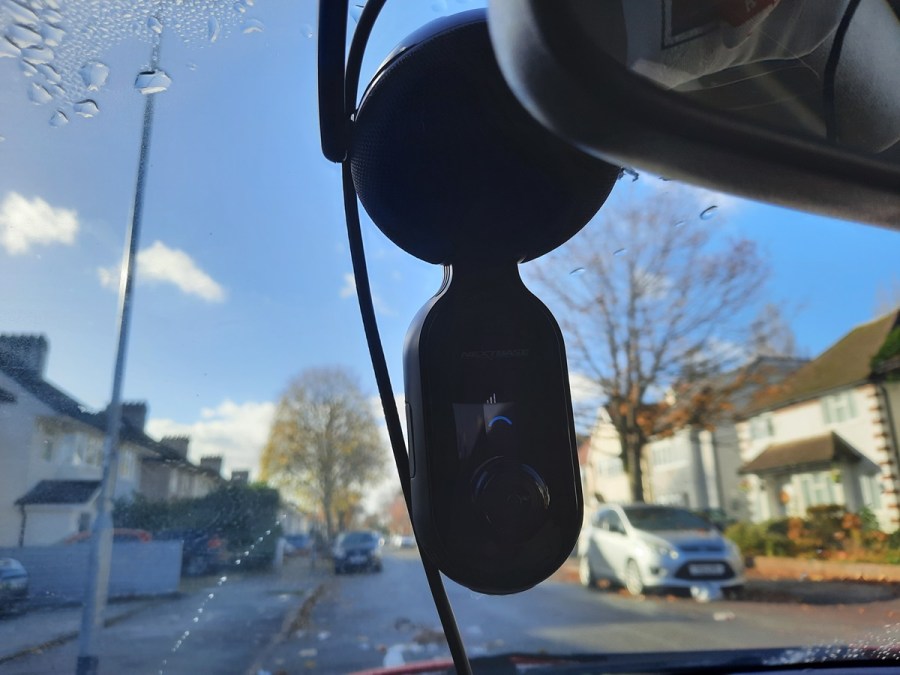
Placement
As you can see, I’ve placed the camera behind and to the left of the rearview mirror. This will allow for a good view of the road ahead, while also not getting in the way. If you need to, you can also change the orientation of the antennas either side of the mount. In my case, the default positioning fit fine, so I kept them as they were. Like every dash cam, the most arduous part of the installation job is tucking away all the cables. The provided trim tool does help in this respect, allowing you to hide the cables behind plastics and headliner more easily. But it’ll always be a bit of a faff, that’s just the nature of it.
Camera performance
The Nextbase iQ has two lenses – one facing out at the road ahead, and one pointing back inside the cabin. This means that you get coverage of not just what happens on the road in front of you, but also details out of the rear and side windows. Plus, if you have an altercation with someone, or if your car is stolen/vandalized, identities and evidence will all be on tape.
If you want, you can purchase a third separate camera to adhere to the rear window for a better view out the back of the car. There’s a port in the Nextbase iQ’s mount to connect the two cameras, allowing the rear cam to piggyback off the iQ’s power and storage. We haven’t got access to a rear camera on this occasion though. Instead, I’ll show you clips of the front and cabin footage to give you an idea of the sort of coverage you can expect from the base iQ setup.
Daytime performance
*these videos are large 4K files, so they may take a few moments to load.
As you’ll hopefully be able to see in the video above, the Nextbase iQ’s 4K video footage is crystal clear. To really analyze its performance, when you watch the video above, keep an eye out for the small details. Can you read texts on signs, or registration plates? How about any identifying features of the people walking along the street? You may need to pause the video to see everything as clearly as possible, but once you do, I’m sure you’ll agree that the iQ’s camera quality is fantastic.
Of course, it’s worth mentioning that the model tested here is the 4K 2160p version, which costs $699.99 / £449.00. However, at less expense, you can also get a 2K 1440p model variant, or a base 1080p model. Those won’t perform quite so well, but should still record adequately.
Daytime performance – cabin lens
On the back of the Nextbase iQ’s body, a second lens points into the cabin of the car. You can manually turn this function off in the settings, but if you want all-round protection, it’s a neat little feature. As you can see in this video, it’s possible to make out details in the side windows of the car, and (if the glass was less frosty) see quite well out of the back. So, if you get rear-ended or sideswiped, this angle will pick up evidence that the front-facing camera never could.
On top of that, The folks at Nextbase say that interpersonal events are also quite a key motivating point for adding this feature. Whether it be police brutality in the US, or unhinged road rage in the UK, the presence of a dash cam pointing at any potential aggressor should help to diffuse the situation. If the recording alone isn’t enough to diffuse any potential danger – inside, or outside the car – there are other options that iQ owners can take. We’ll get onto that later…
Night performance
Every camera struggles at night time, that’s just an unfortunate reality when recording footage when there is less light available. However, some cameras struggle more than others. I’m glad to say that the Nextbase iQ sits on the right end of that spectrum. You do still get a bit of glare, and finer details can get lost. However, I was reasonably impressed with how much remained legible. Towards the end of the video, if you pause the footage, you should be able to make out what the street signs say. In fact, if you capture the right frame, you might even get a registration plate as we pass by.
Once again though, it’s important to stress that this is the top of the range model. Lesser-equpped iQ variants won’t perform as well in the dark. In fact, to get an idea of what the 1080p version might be like, check out the performance of the Nextbase 222.
Night performance – cabin lens
When it comes to night time, there’s a big difference with how the cabin camera acts. Instead of recording normally, it switches to black and white footage. The good news is that this means it’s better at picking up finer details. The bad news is that it makes me look even scarier than usual…
Extra Features
The Nextbase iQ is so much more than just a camera though. In fact, it’s one of the most feature-packed dash cams ever built. From launch, it’s got enough kit to make it a class-leader, but what’s scheduled for post-launch updates is set to make it downright revolutionary.
Witness Mode
Earlier on I mentioned that iQ owners had a few options when it came to protecting themselves and their vehicle. Well, one of those options comes in the form of Witness Mode. This is activated by voice, and when triggered, will livestream and save the next 30 minutes of events. If you have emergency contacts saved, those contacts will receive notifications and a link to watch the stream of footage. So, if you find yourself in a distress situation, you’ll be able to broadcast your predicament to those closest to you so that they can send/offer help. If you need to look back at the footage at a later date, perhaps to show to the authorities, then you can download Witness Mode videos from the cloud.
Alternatively, you can manually upload clips to Nextbase’s safety portal once your journey is over. This is an online hub monitored by police, where people can post footage of dangerous drivers. Nextbase claims that of the 600,000 videos submitted thus far, roughly half have resulted in the offending driver receiving a warning or prosecution.
Emergency SOS
However, what if the worst happens and you aren’t physically able to trigger something like Witness Mode? Well, that’s where the Nextbase iQ’s SOS system comes into play. If iQ detects a big impact and then you don’t respond to its prompts after a reasonable amount of time, it’ll automatically contact the emergency services. Plus, as iQ is enhanced by What3Words, it’ll be able to report incredibly accurate location data. Though, you’ll have to forgive me for deciding against testing this function first-hand…
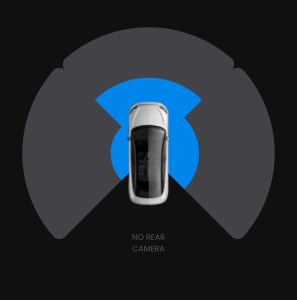
Making adjustments to the sensitivity of Nextbase’s parking radar is super easy.
Smart Sense Parking
Smart sense parking is my favorite iteration of ‘parking mode’ that I’ve come across so far, and that’s across all the main brands of dash cam. The way it works is through radar, and if iQ detects a person or vehicle getting quite close, it’ll wake up the dash cam to record footage of any impending event. You’ll also get a notification at this time, allowing you to livestream what the dash cam is seeing via the Nextbase iQ smartphone app.
Crucially, there’s a good level of adjustability to this feature too. Depending on where you park your car, it may have people or vehicles pass it by quite frequently, at close proximity. Naturally, it’d be extremely annoying if you were notified every time this happened, but fortunately you can tailor the radar’s sensitivity in the iQ app through a neat graphic tool. This allows you to adjust the sensitivity of each side of the car independently. This is ideal for me, as my car is street-parked. That means I only need the radar to pick up when something or someone is at extremely close proximity, and handily, I was able to modify it to do exactly that.
Another cool feature that you can activate from the smartphone app is an alarm. It isn’t particularly noticeable from outside the car, but it certainly gets your attention when you’re in it. So, if you get notified of an intruder, triggering that alarm could be a handy deterrent, especially in tandem with the intimidating red LED ring that circles the iQ when in parking mode.
Future Features
From a technological point of view, the future is exciting for Nextbase iQ owners. A flurry of additional functions are in the pipeline, and it should transform the iQ into a dash cam like no other. Here’s what’s going to be on offer:
Guardian Mode
Does your car often get driven by someone else? Perhaps a partner, your child, or even valets? Well, in Guardian Mode, the Nextbase iQ will allow you to set certain parameters relating to driving behavior, which if violated, will spark a notification on your phone. So, if somebody is driving too fast, braking too harshly, or travelling beyond a prescribed location, you can intervene on the spot and talk directly to whoever is behind the wheel.
Roadwatch AI
To me, the most exciting upcoming feature is Roadwatch AI. This is real sci-fi stuff. Essentially, the Nextbase iQ will map the speed and direction of travel of other vehicles that you encounter on the road. Then, if you end up having an accident, iQ will create an encrypted incident report, modelling what happened. The report will include video, graphical figures and a timeline. So, if you ever need to prove your innocence, this will act as the ultimate tool. In fact, Nextbase is already in discussions with insurance providers about lowered premiums for iQ users.
Driver/Vehicle Awareness Systems
Awareness systems are relatively commonplace in new cars, but if you drive something older like I do, Nextbase iQ will offer some of the guidance that many OEMs have now started providing.
Specifically, if the cabin camera detects that you’re getting drowsy behind the wheel, you’ll hear a tone designed to alert you. Plus, if the iQ’s radar system detects something in the road that you don’t seem to be reacting to, that’ll also trigger a warning tone. The key with features like this is to not be too overbearing. If the system is too sensitive and the tones trigger too frequently, that’ll quickly become an annoyance that people switch off. Instead, you want to make sure that those warnings only sound when they’re really needed, which is a fine balance to achieve. Time will tell if Nextbase has got it right.
Subscription Levels
If you’ve been waiting for a catch, this might be it. To experience the full capabilities of Nextbase iQ, you’ll need to pay a subscription fee. There are three different tiers to consider, each with varying levels of usefulness. I’ve put all the key points into a comparison below, which should help you to decipher which service is right for you.
Solo – FREE
- Nextbase iQ app
- Voice Control
- Real-Time Notifications
Protect – $9.99 / £6.99 (per month)
- 4G data included
- Nextbase iQ app
- Voice Control
- Real-time notifications
- Live View
- Smart Sense Parking
- Witness mode
- RoadWatch AI
- Guardian Mode
- Remote Alarm
- Cloud Storage – 30 days
Protect Plus – $19.99 / £9.99 (per month)
- 4G data included
- Nextbase iQ app
- Voice Control
- Real-time notifications
- Live View
- Smart Sense Parking
- Witness mode
- RoadWatch AI
- Guardian Mode
- Remote Alarm
- Cloud Storage – 180 days
- Emergency SOS
- Multiple user accounts
- Automated incident back-up
- extended warranty
Conclusion
The Nextbase iQ is a fantastic product. It offers levels of security and evidence tracking that other traditional dash cams simply cannot match, not to mention picture quality that places it right at the top of the tree. Compared to everything else on the market, this dash cam really does feel like a new standard-setter in terms of its depth of functionality. It’s a good camera, but more than that, it’s a good security device.
The only hitch is that subscription service. Once the monthly payments start to add up, the expense becomes quite considerable on top of what was, in my opinion, quite a reasonable retail price. For example, if you pay for Protect Plus on a 4K iQ for a year, it’ll cost you almost a thousand dollars altogether. For most people though, the mid-tier Protect subscription fee will suffice. Even still, that initial 4K purchase plus a year of use will set you back $819.97 / £532.88 (discounting promotional offers). That’s strong money, but if you’re serious about protecting yourself, your car, and your passengers, it could be money well spent.

